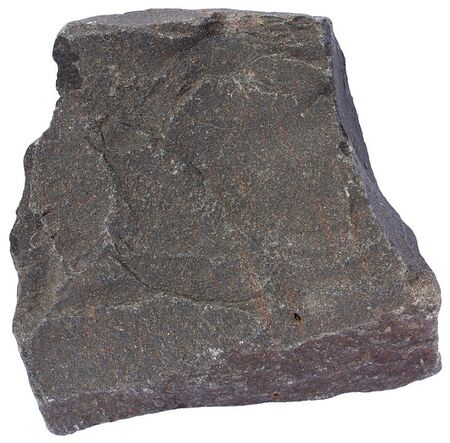Basalt
Basalt is a fine-grained extrusive igneous rock that is composed mainly of plagioclase and pyroxene minerals which give basalt its dark color. Basalt has a lot of characteristics in common with gabbro, but they can be easily differentiated. Basalt is an extrusive rock that forms in a cooling basaltic lava flow or in small intrusive bodies like a dike or sill. Gabbro on the contrary forms intrusive and has therefore much larger grains and is defined as a coarse-grained rock. Basalt is a very abundant rock and appear at almost every ocean basin.
Environments
As was said before, basalt mainly forms at the oceans basin due to lava flows and dikes or sills. These lava flows exist due to plates forming underwater volcanoes or molten rock flows. There are three main environments, namely oceanic divergent boundaries, oceanic hotspots, mantle plumes and hotspots beneath continents. All are described below.
Oceanic divergent boundaries
Most of Earth's basalt is produced at divergent plate boundaries on the mid-ocean ridge system. Here convection currents deliver hot rock from deep in the mantle. This hot rock melts as the divergent boundary pulls apart, and the molten rock erupts onto the sea floor. These submarine fissure eruptions often produce pillow basalts.[1]
Oceanic hotspots
Basalt production at these locations begins with an eruption on the ocean floor. If the hotspot is sustained, repeated eruptions can build the volcanic cone larger and larger until it becomes high enough to become an island. All of the islands in the Hawaiian Island chain were built up from basalt eruptions on the sea floor.[1]
Mantle plumes and hotspots below continents
The third basalt-forming environment is a continental environment where a mantle plume or hotspot delivers enormous amounts of basaltic lava through the continental crust and up to Earth's surface. These eruptions can be from either vents or fissures. They have produced the largest basalt flows on the continents. The eruptions can occur repeatedly over millions of years, producing layer after layer of basalt stacked in a vertical sequence.[1]
References
Basalt

| Type | Extrusive igneous rock |
|---|---|
| Lookalike | Gabbro |
| Clasts | Fine grained |
| Hardness | Very hard |
| Color | Dark |
| Minerals | Plagioclase and pyroxene minerals |
| Touch | Rough |
| Image | Basalt image |